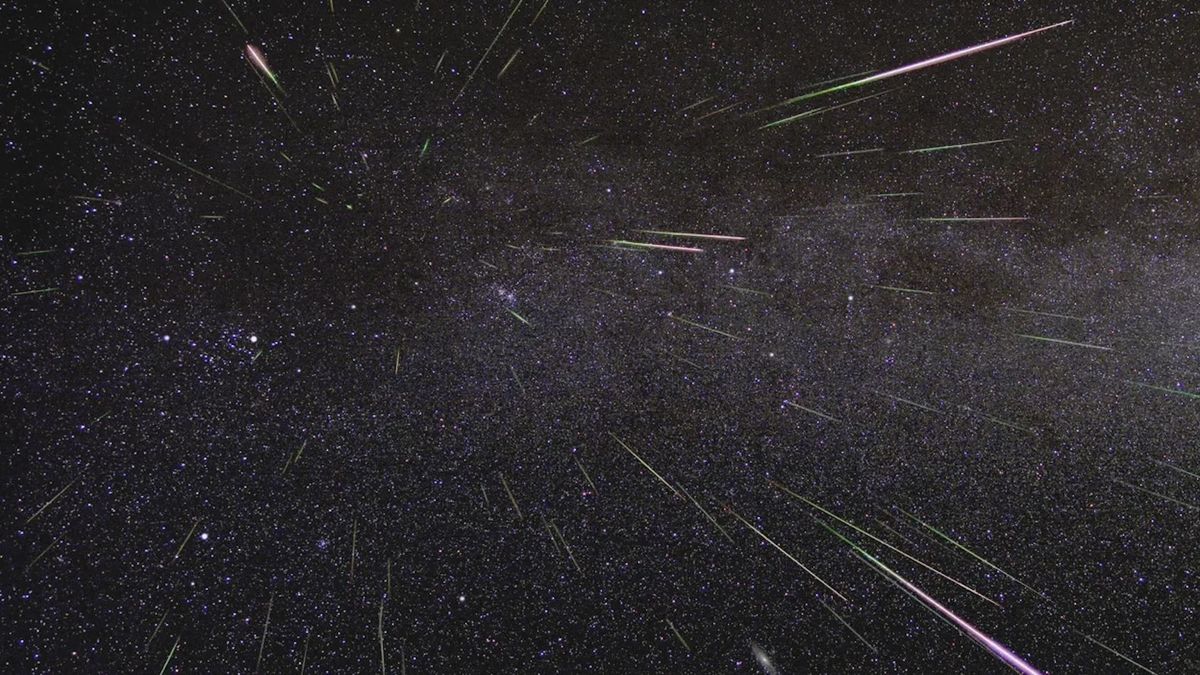One of the most prolific annual meteor showers of the year, the Perseids, will peak next weekend, bringing up to 75 “shooting stars” per hour to the sky Sunday night and early Monday (Aug. 11 to Aug. 12).
Although bright meteors are expected, the display can be significantly affected by strong moonlight. But this year, the moon will set just as strong activity begins to occur from the Perseids, according to the American Meteor Society. The best time to look will be after 1 a.m. local time on Monday, Aug. 12.
Shooting stars are caused by meteoroids. As these tiny particles enter Earth’s atmosphere, they heat up and vaporize, releasing energy visible as streaks of light in the night sky. The Perseids move at a swift 37 miles per second (60 kilometers per second), and there are typically between 50 and 75 visible each hour during the peak night. That’s about one per minute, though you’ll need to be as far away from light pollution as possible to see an impressive number of shooting stars.
Related: The 1st week of August is a stargazer’s delight. Here’s why.
The Perseid meteor shower is known for its fast and bright meteors, according to NASA. The meteors appear to emanate from the constellation Perseus, which is how they get their name. This constellation will rise high in the northwestern sky in the Northern Hemisphere in the hours after midnight, when the most shooting stars are expected to be seen. Also visible in this region of the sky is the Andromeda Galaxy, above Perseus, and the Pleiades, above Mars and Jupiter.
Although next weekend’s peak offers the highest frequency of meteors, the Perseids are active from July 14 to Sept. 1, 2024, and “shooting stars” can be seen every night.
The visibility of shooting stars depends a lot on the moon’s phases. Luckily, on Monday, Aug. 12, a half-lit moon will set about an hour after midnight local time across the Northern Hemisphere, meaning no strong moonlight will interfere with the peak of the Perseids this year. A clear, dark sky is required to see the meteors.
Stargazing binoculars and backyard telescopes are not recommended for seeing meteor showers, as you’ll want to let your eyes take in the whole sky to search for shooting stars. However, you’ll want to have your stargazing gear ready for other night sky events this year, including planetary conjunctions, supermoons and potentially a very rare comet flyby.
According to NASA, Comet 109P/Swift-Tuttle is the root cause of the Perseid meteor shower. It last entered the inner solar system in 1992 and will enter it again in 2125.













/https://tf-cmsv2-smithsonianmag-media.s3.amazonaws.com/filer_public/d1/82/d18228f6-d319-4525-bb18-78b829f0791f/mammalevolution_web.jpg)






Discussion about this post